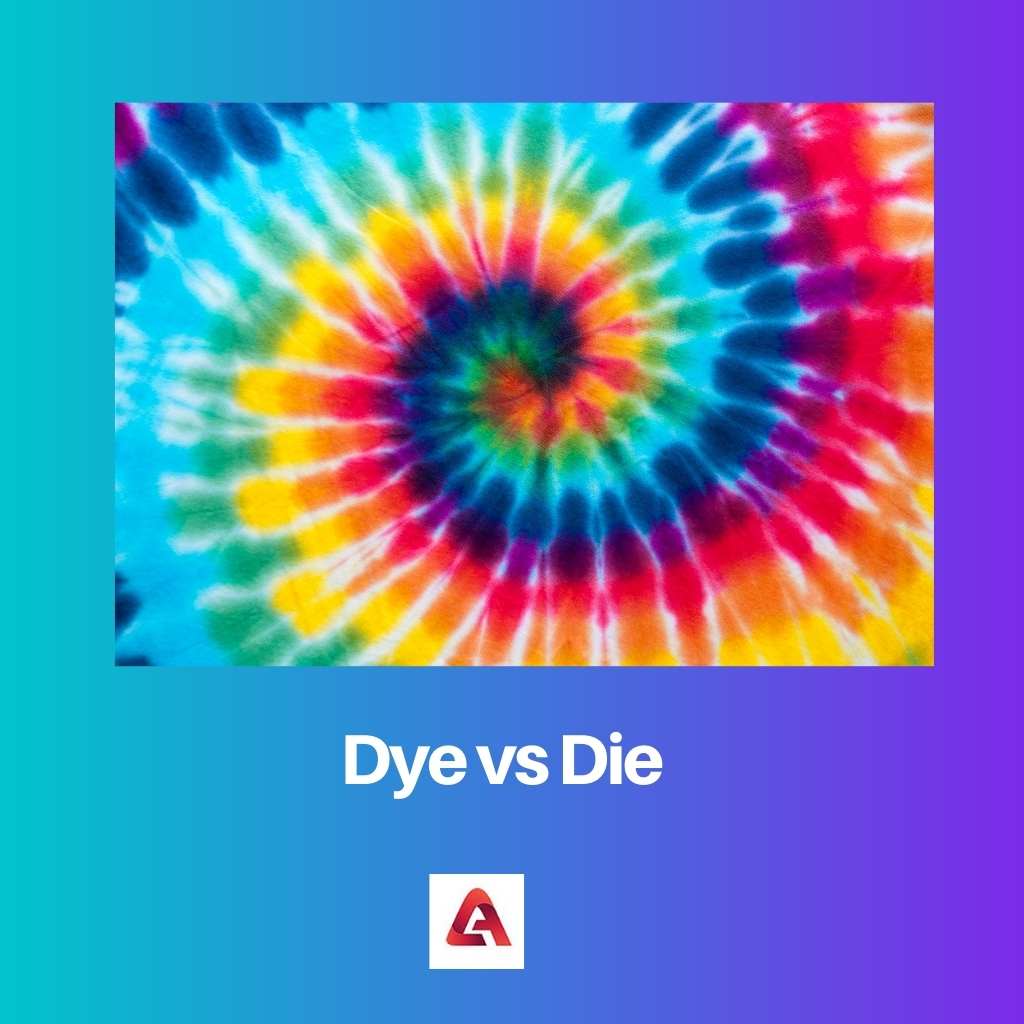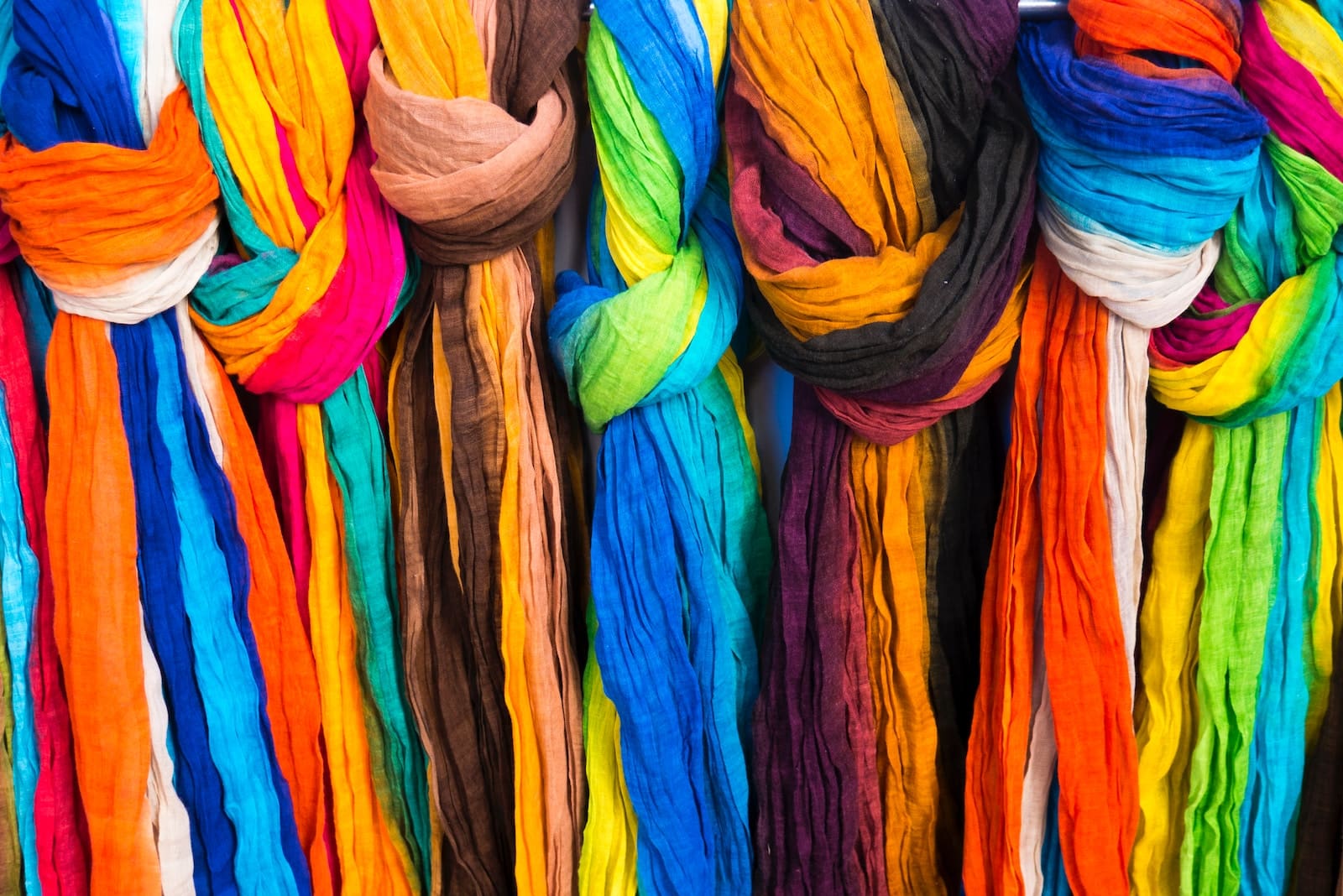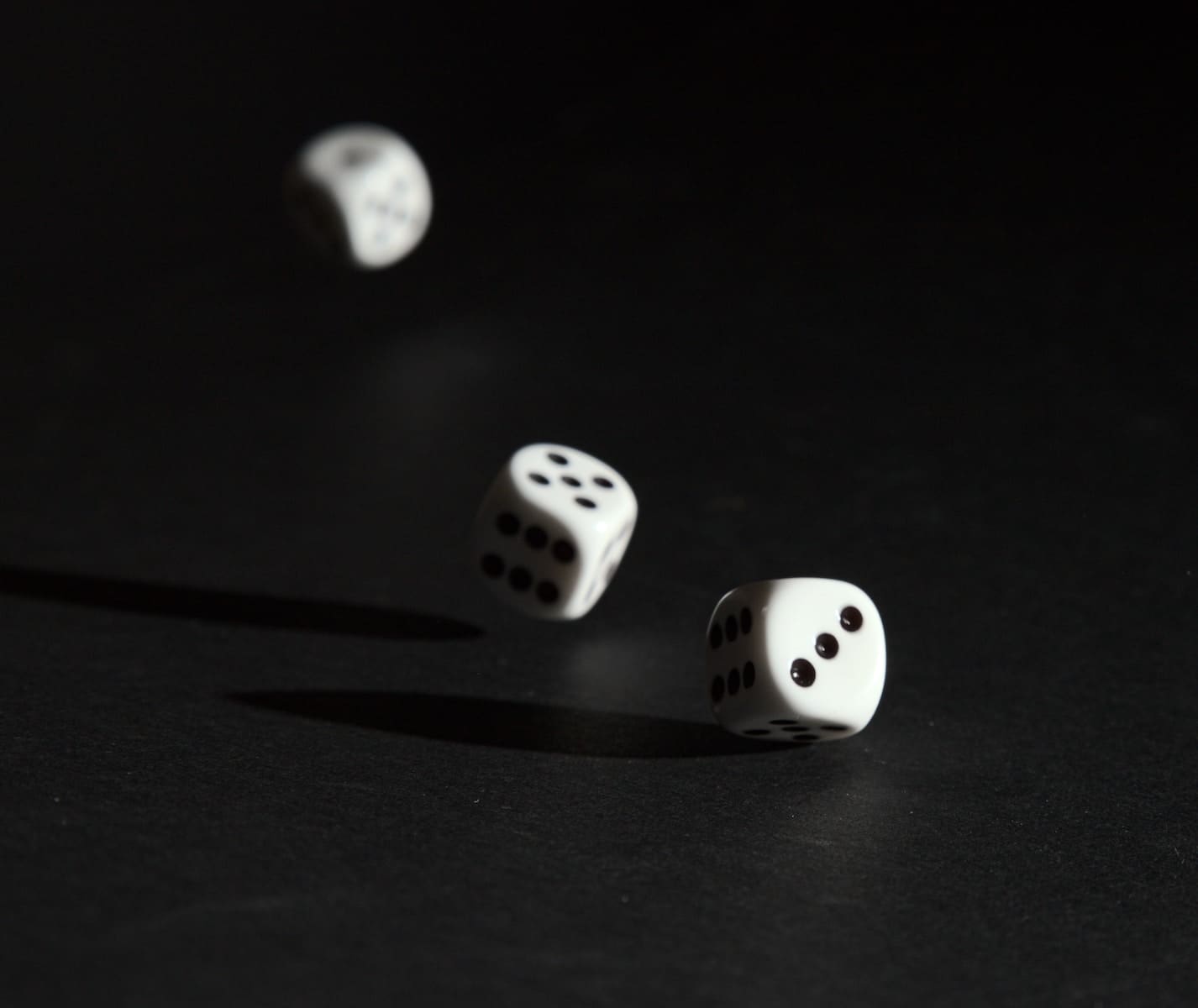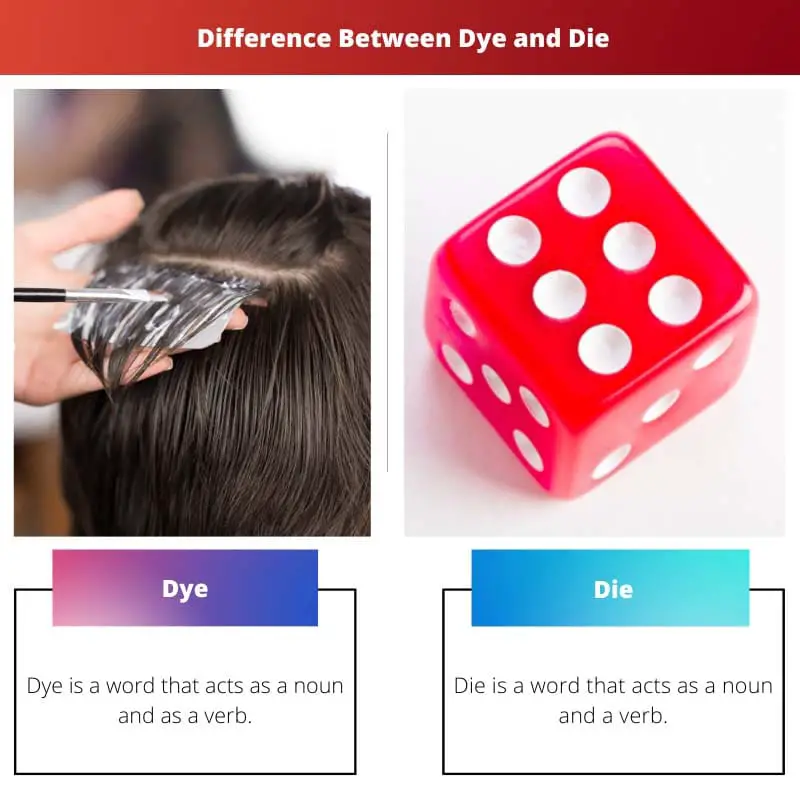English grammar and vocabulary are constantly growing with new rules and conditions. Although every country uses different accents and dialects, the spelling of every word, with some exceptions, remains the same.
Homophones are the most confusing part of the language. For instance, the words dye and die sound similar but interchanging them in a sentence would entirely change the meaning. Thus, it is vital to know the difference between them.
Key Takeaways
- Dye is a coloring substance used to color fabrics, hair, or other materials, while a die is a tool used to cut or shape materials such as metal, plastic, or wood.
- Dye is a noun or verb referring to the process of adding color, while die refers to the process of cutting or shaping.
- A dye can have many colors, while a die produces a uniform shape or pattern.
Dye vs Die
A “dye” is a substance used to change the color of materials such as textiles, hair, or paper. Different types of dyes can be used to achieve different results. A “die” is a tool used to shape or cut material into a specific form. In manufacturing and fabrication, dies are used in presses to cut and form metal or plastic shape.

The word dye is included in the category of a noun and a verb. As a noun, it denotes a coloring agent that is used to color any substance.
Dye gets attached to the surface of the fabric as a substrate and gives out a peculiar color. As a verb, the word dye could mean the act of coloring something.
We include the word Die in the category of a verb and a noun. As a verb, Die depicts the act of death/ dying. It may be physical or emotional, physically it could mean to stop breathing, while mentally, it could mean to lose hope and die from inside.
As a noun, the word die denotes a six-faced cube used to play a game of chance like monopoly or ludo.
Comparison Table
| Parameters of Comparison | Dye | Die |
|---|---|---|
| Description as a Noun | Coloring substance | Six-Faced cube |
| Description as a Verb | Act of coloring | Stop living |
| Additional Meanings | Food Dyes | A device used to cut specific shapes, mold, etc. |
| Types | Synthetic Dyes, Acidic Dyes, Basic Dyes, etc. | Internal death (Loss of hope), Physical Death (Stop breathing), breakdown, separation from family, etc. |
| In sentences | She was willing to dye her hair brown | She threw the die and hoped for a six to win. |
What is Dye?
Aforementioned, dye is a word that acts as a noun and as a verb. As a noun, it signifies a coloring agent/ substance that chemically reacts with fabric/ hair and leaves the color as a residue.
As a verb, we use it to describe the process of coloring the said substance, I.e., dyeing.
The process of dyeing originated around 12,000 years ago in the Neolithic era. Textile/ fabric dyeing was quite popular in the past.
Back then, people used naturally available colors to dye their fabrics. It was the hobby of the rich. Dyed fabrics were one of the most expensive and luxurious items in the past.
Back then, Asian and European countries were the chief manufacturers of dyed fabric; they produced dye through natural substances like saffron, indigo, woad, etc., which became quite sensational globally.
Dyeing is through absorption of light. The color in a dye absorbs light (visible region) of the EM spectrum.
According to their ability of absorption, chemical properties, rate of solubility, we can classify these dyes into various types, mainly basic, acidic, reactive, and Sulphur dyes.
The word dye may also refer to food dyes, which are now referred to as food additives. These are used to add the desired color to the food, such as blue or green.
They manufacture these types of dyes with extra precaution as these are edible while the rest of the dyes are not. Each type of dye has its property and use.

What is Die?
As mentioned above, die is a word that acts as a noun and a verb. As a noun, it signifies the six-faced cubic structure used to play a game or a machine that cuts something into a specific shape, while we use it as a verb to describe the act of dying.
We use the word die when someone stops living, either mentally or physically.
The word die signifies a permanent procedure. We can never bring back a person who died. Scientifically, every biologically living organism will undergo the process of death.
Aging is the prime cause of death in human beings. While if a person/ patient is declared brain dead, then they are considered being dead as the brain is the primary functioning organ of the human body and is considered to be the most vital part of the body.
Only a virus can refrain from death as it can mutate into different variants. Thus, we do not include viruses in the list of organisms. Even the smallest cells of a human body undergo the process of senescence/ death.
Usually, when someone dies, it is considered as a sad occasion as close members are affiliated with the person dying; the death of someone itself leaves a tremendous impact on the surrounding people.
Although some people believe in the concept of an afterlife like heaven and hell.
Die could also denote the cubic structure that has different markings on each side. Players throw it to get a number and move the piece according to the number obtained.
We use it in games of chance like board games- monopoly, ludo, snakes’ ladders, etc. Historically, many games have been played using die/ dice; these dice have also aided in making many diplomatic decisions, especially in the Indian Subcontinent.

Main Differences Between Dye and Die
- The word dye as a noun denotes a coloring agent/ substance specifically used to color hair/ fabric, while the word die as a noun describes the six-faced small cubic structure with certain markings.
- As a verb, the word dye means the act of applying color (dyeing), whereas as a verb, the word die denotes the action of dying or stopping living/ breathing.
- Dye is sub-categorized into various types like synthetic, natural, acidic, basic dyes, etc. While die/dying can also be classified into physical death (loss of breath and normal body functions), mental death (loss of emotions and spirituality), breakdown, brain dead, etc.
- The word dye could also mean food dye (food additives), whereas the word die could also mean a device specifically used to cut materials into definite shapes.
- We can use the word dye in a sentence as, ‘He dyed his hair on the occasion of his mother’s birthday, while we can use the word die in a sentence as ‘Last month she died after suffering from brain cancer.

References
- https://www.sciencedirect.com/science/article/pii/S0160412016300186
- https://jamanetwork.com/journals/jama/article-abstract/387754
